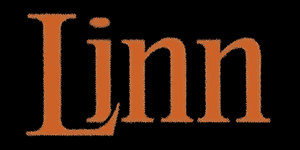
The company was founded in 1979, back then it was called Linn Moffett Electronics. Roger Linn and Alex Moffett were the founders of the brand. Moffett left the company in 1982. Roger Linn – more of a guitarist and producer (quite experienced) than an engineer - became known as a developer of the first drum machine with digital samples.
The brand began to produce quality sequencers, samplers, drum machines, modules and guitar pedals.
The first drum machine which incited a true revolution in the world of electronic musical instruments was released in 1980. The model was called LM-1 (Linn/Moffett) and was specified as a unit featuring a nice selection of live drums samples of high quality - session musicians were invited to record. LM-1 became one of the first programmable drum machines on the market of musical instruments and the first one using a selection of digital samples. The instrument included 100 memory patches increasing its capabilities. The idea of creating LM-1 came to Roger's mind when he was tired of experimenting with a meager set of factory pre-installed rhythmic patterns of instruments of that time. Lynn achieved its unique sound with the built-in chip which converted digital samples into analog audio. He also admitted that the unique "hissing" at the output happened due to the primitive lack of engineering knowledge, and discretization (aliasing) resulted from it. LM-1 was developed in three versions: Rev. 1, Rev. 2, Rev. 3, the difference between them was in the interface: LEDs were added for user’s convenience while buttons and knobs were also relocated. Swing and Quantize functions became a real innovation and ensured the firm leading position of the instrument on the market. Roger’s drum machine included a 13-channel mixer with individual outputs which for the first time enabled the integration of this type of instrument with recording equipment.
The success of the first digital drum machine LM-1 was repeated by LinnDrum. The instrument served as an improved version of its predecessor and even used to carry the name of LM-2. LinnDrum, unlike the LM-1, included more sounds and more possibilities for step-by-step programming, but it didn’t allow you to customize the sounds of the drums individually. Although the lack of this function has made LinnDrum a more accessible instrument for musicians. The drum machine included memory for 56 user patterns and 42 drum presets, as well as the ability to replace existing sounds with the new ones loaded onto EPROM chips (Erasable Programmable Read Only Memory).
In 1984 Linn 9000 was developed to replace the successful LinnDrum. The instrument was a hybrid of a drum machine and a MIDI sequencer. Among its distinctive features there were sensitive pads, LCD display, floppy drive, 32-track MIDI sequencer with the sampling possibility. The instrument, despite some issues with the operating system, further influenced MPC 60 and MPC4000 products launched by Akai which also introduced unique Linn 9000 pads in its instruments. Forat Electronics later fixed all Linn software bugs and revived the machine under the name of Forat 9000.
In 1985 the company released its first rack module which included MIDI sequencer functions. A special control panel was also attached to the sequencer. LinnSequencer was based on Linn 9000, and therefore proved to be equally unstable. In 1986 when Roger left his business Forat decided to grab this system as well, acquiring the rights for Linn’s designs and reissuing it as Forat LinnSequencer.
The last brand instrument - LinnDrum Midistudio - was demonstrated at NAMM 1986 as a new version of Linn 9000 but it wasn’t released due to the folding of Linn Electronics. Midistudio replicated many of Linn 9000 features presented as its rack version with some improvements but keeping unaltered and incurable basics of the failed hybrid released back in 1984. LinnDrum Midistudio can be considered another evolutionary step towards Akai MPC series. The famous MPC Akai 4x4 layout belongs to Linn's machines, however, the concept was put into the popular MPC when Roger became a member of the Japanese company.
In 2001 Roger Linn founded the new Roger Linn Design brand. Among RLD products we can name AdrenaLinn series guitar pedals (released in collaboration with Dave Smith and Tom Oberheim) which were used by Marillion, RHCP and Green Day, as well as LinnStrument controllers. In 2007 Linn and Smith released LinnDrum II, and in 2011 they renamed the product into Tempest, a multi-purpose unit defined as a drum machine, a drum synthesizer, a polyphonic synthesizer and an analog groovbox – all in one.
Roger Linn wrote songs together with such musicians as, for example, Eric Clapton, and went on a tour with Leon Russell. In 2011 Roger received the Grammy Award for technical achievements in recognition of his services to the music industry.

